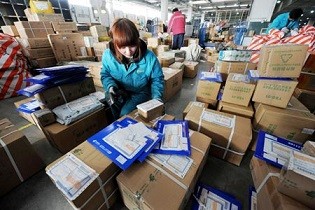Several express delivery companies in the country are planning to expand their services in other countries as they continue to reshuffle and hire new staff to meet industry demand.
The China Daily reported that Shanghai YTO Express (Logistics) Co. Ltd., one of the country's major delivery service providers, hired Zhong Zhanrong to become its vice president and help expand the company's services in Southeast Asia.
Zhong, the former Asia-Pacific trans-shipment director of United Parcel Service of North America Inc. (UPS), was one of the senior executives who left the American company to work for a Chinese company. The other one was Xiang Feng, UPS vice president, who left in 2013 and later became YTO's chief executive officer.
Experts said that the reshuffle in the express delivery is a result of the rapid growth of e-commerce in the country.
Wang Xiaoxing, an e-commerce analyst at Beijing-based Analysys International, said that many consumers are buying products from abroad through the Internet, which created challenges to shipping companies.
Wang added that China's express delivery firms have to deal with the challenge to ensure the quick delivery of goods for international clients.
The government reported that online transactions reached 216 billion yuan ($34.83 billion) in 2014, which involved more than 18 million buyers.
Nielsen March Research Co. Ltd., an international market research firm, predicted the market to reach more than 1 trillion yuan in 2018.
The reshuffle among express delivery firms in China first occurred between 2006 and 2008, at the time when the country's e-commerce business was just taking off.
Now, China's logistics industry is dominated by seven leading companies, which include the state-owned China Postal Express & Logistics Co. Ltd. and six other private competitors, which are mainly engaged in delivering e-commerce parcels.
The six private couriers--namely, SF Express, YTO, Shanghai STO Express Co. Ltd., Shanghai Yunda Express Co. Ltd., ZTO Express Co. Ltd., and Best Express--deliver almost 80 percent of online-shopping orders.




























